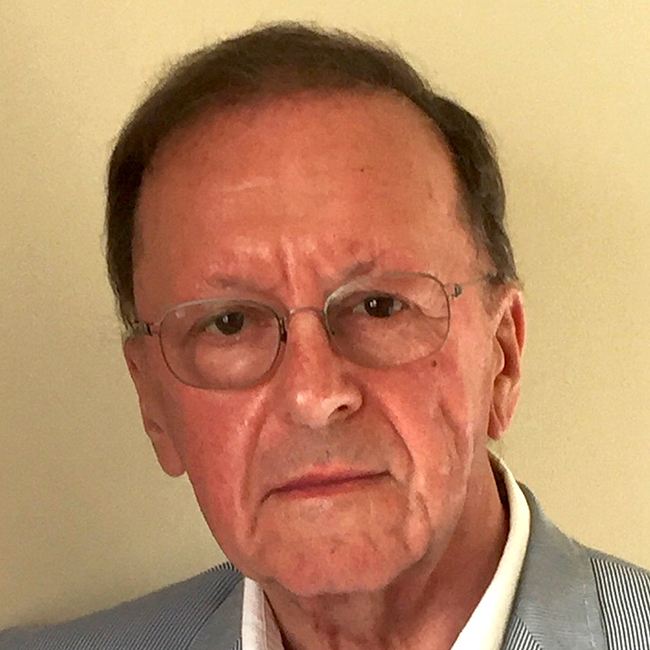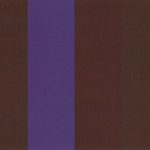Ernest Edmonds

Most Recent Affiliation:
- De Montfort University and University of Technology, Sydney, Professor of Computational Art and Founding Director of the Creativity and Cognition Studios
Location:
- Leicester, England, United Kingdom
Website:
Bio:
Ernest Edmonds’ art is in the constructivist tradition and he is a pioneer in the use of computers and computational ideas. His art explores algorithms used to relation to colour, time, communication and interaction. He first used computers in his practice in 1968, first showed an interactive artwork with Stroud Cornock in 1970 and first showed a generative time-based computer work in London in 1985. He has exhibited throughout the world, from Moscow to LA. The Victoria and Albert Museum, London, holds some of his artwork and is collecting his archives within the National Archive of Computer Based Art and Design.
He has many publications in the fields of art, creativity and human-computer interactiont. Ernest Edmonds is Professor of Computational Art at De Montfort University, Leicester, UK and Founding Director of the Creativity and Cognition Studios at the University of Technology, Sydney.
Ernest Edmonds was born in London and studied Mathematics and Philosophy at Leicester University. He has a PhD in logic from Nottingham University. He has held the position of University Dean, has served on many funding and conference committees and was a pioneer in the development of practice-based PhD programmes. He has been an invited speaker in, for example, the UK, France, the USA, China, Australia, Japan and Malaysia.
Art Works:
-

Broadway One
Categories: [2D & Wall-Hung]
[SIGGRAPH 2004] -

Art Systems: 1968 to 2018
Categories: [2D & Wall-Hung]
[SIGGRAPH 2018,SIGGRAPH Artworks in the Victoria & Albert Museum]
Writings and Presentations:
-
Title:
Living Laboratories: Making and Curating Interactive Art
Writing Type: Essay
Author(s):
Exhibition: SIGGRAPH 2006: Intersections
Abstract Summary:This paper describes the development of laboratory concepts in the making and curating of interactive art, in which the exhibition becomes a site for collaboration between curators, artists, and audiences. It describes Beta_space, an experimental public venue that seeks to realise the concept of the exhibition as living laboratory
[Download PDF]
through the participatory qualities of interactive computer-based art. The paper places this initiative within an emerging phenomenon of hybrid production and exhibition spaces. It argues that the evolution of such concepts has been hampered by the continued distinctions,
within traditional cultural institutions, among art, science and technology, object and experience, creation and consumption.
Title: New Interactions: Communities and Information
Writing Type: Panel / Roundtable
Author(s):
Exhibition: SIGGRAPH 2006: Intersections
Abstract Summary:In coining the phrase “relational aesthetics,” the contemporary French art theorist and curator Nicolas Bourriaud attempted to define a trend in creative works that configures interactive scenarios in which everyday experiences are the catalyst for audience-driven participation. This panel explores how the tacit activities of urban living are being used to form the foundations for new types of interaction that exploit community life and information-rich environments. Topics include how “relatio
Title: Audiovisual Discourse in Digital Art
Writing Type: Essay
Author(s):
Exhibition: SIGGRAPH 2004: Synaesthesia
Abstract Summary:This paper discusses art systems that employ image and sound as equal elements. This can be called the evolution of the “audiovisual discourse” in art and technology. Recent software for manipulation of audio and visual material is briefly described, and audio/visual digital artworks, developed during an artist-in-residence-based project, are illustrated as examples of contemporary artistic projects concerned with this theme. Different artistic approaches in the use of audio/visu al systems are identified on the basis of the historical research and the second author’s work, as a technologist, in collaboration with the artists participating in the project. Finally, the role of the computer as audio/visual instrument is discussed.
[Download PDF]
Role(s):




